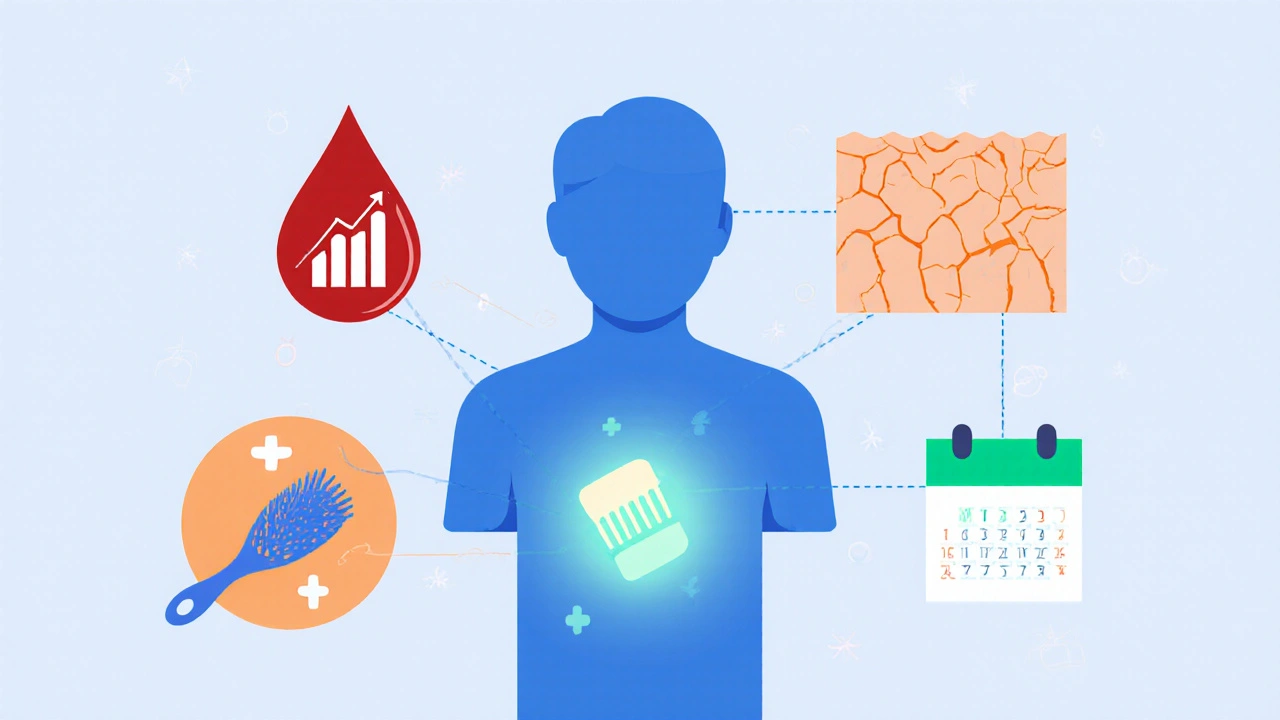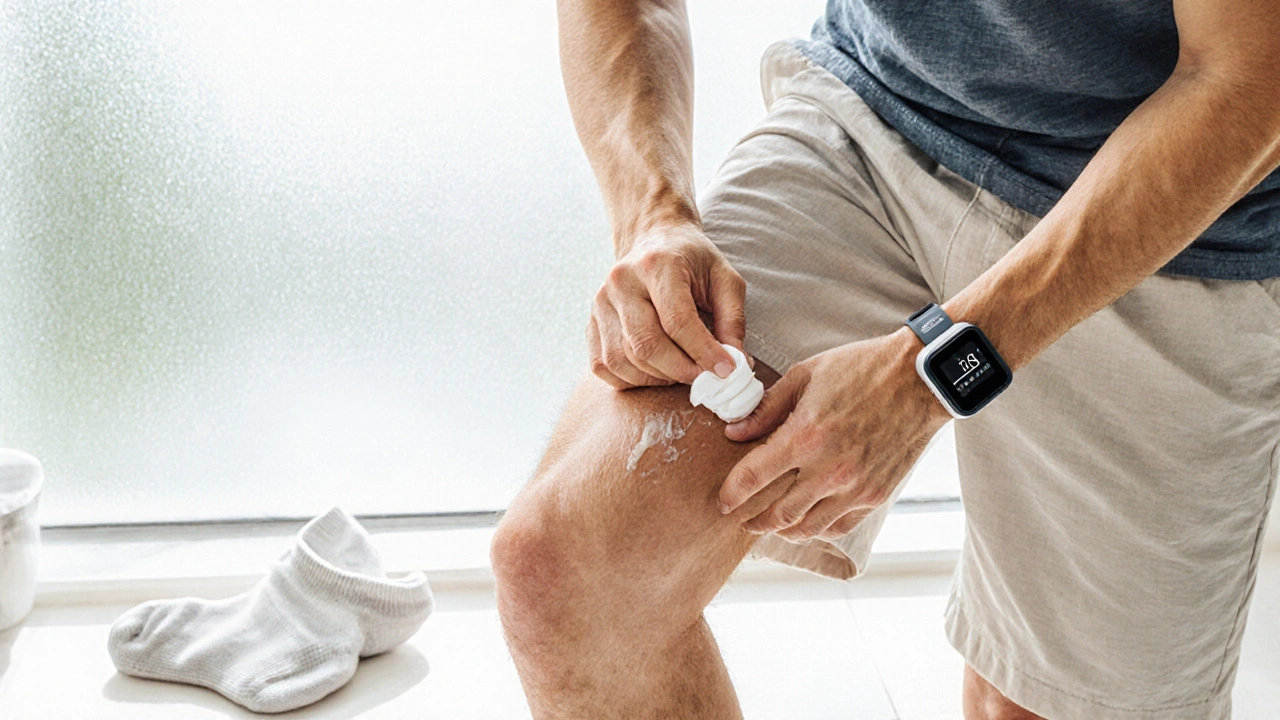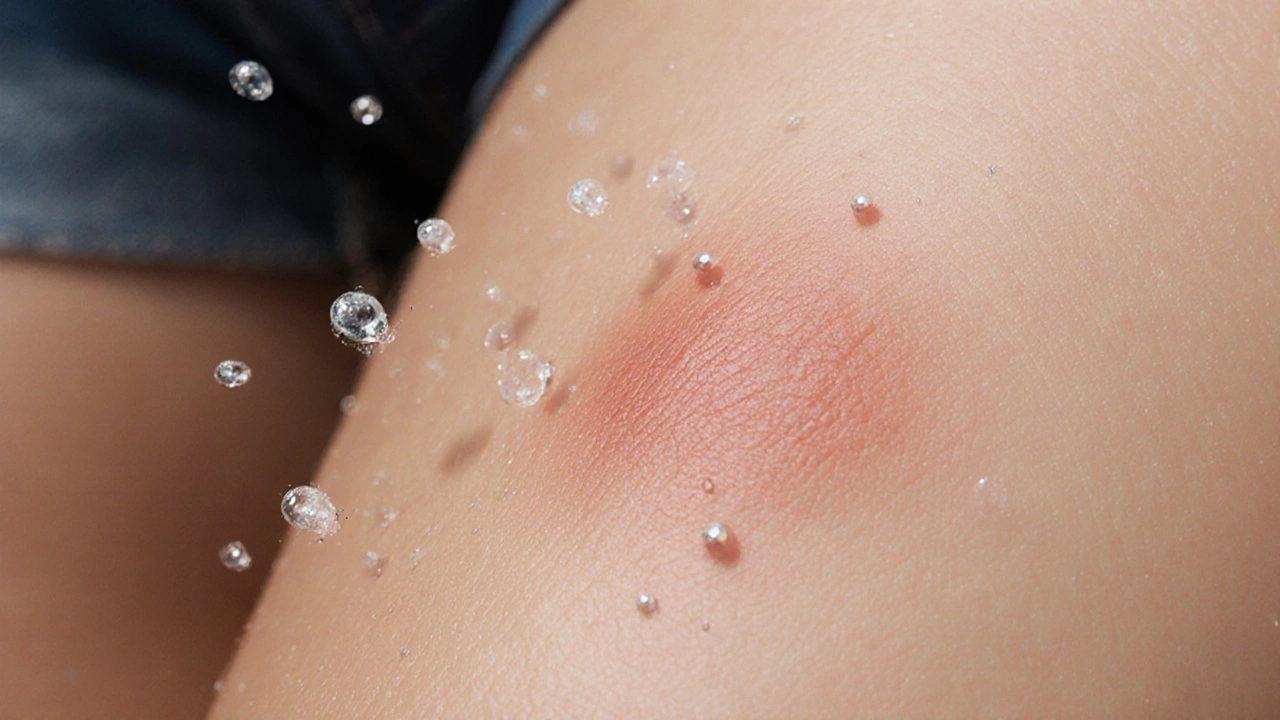Diabetes Skin Yeast Infection Risk Calculator
Your Risk Assessment
Risk Level: --
Prevention Recommendations
diabetes skin yeast infection is a common worry for many people with high blood sugar, but the science behind it is often fuzzy. Below is a quick cheat‑sheet followed by a deep dive into why diabetes makes you prone to yeast infections on the skin, what to look for, and how to keep it under control.
- High blood sugar feeds Candida, the fungus behind most skin yeast infections.
- Impaired immune response and dry skin create a perfect breeding ground.
- Typical signs include red, itchy patches in warm, moist areas.
- Controlling glucose levels and proper skin hygiene cut the risk dramatically.
- Topical antifungals work, but long‑term prevention hinges on stable glycemic control.
What Diabetes Really Is
Diabetes is a chronic metabolic disorder characterized by elevated blood glucose levels due to either insufficient insulin production (type 1) or insulin resistance (type 2). According to the International Diabetes Federation, over 537 million adults worldwide lived with diabetes in 2021, and that number is climbing as lifestyles become more sedentary.
Cutaneous Candidiasis: The Skin Yeast Infection
Cutaneous candidiasis is a fungal infection of the skin caused mainly by Candida albicans. It thrives in warm, moist environments-think armpits, groin, under the breasts, and any area where skin folds create humidity.
Why High Blood Sugar Feeds Candida
Blood sugar isn’t just a number; it directly influences the skin’s ecosystem. When glucose levels spike, excess sugar leaks into sweat and interstitial fluid, providing an abundant food source for Candida albicans. Studies from the Journal of Clinical Endocrinology (2023) showed that patients with an average HbA1c above 8% had a 2.5‑fold increase in skin fungal colonization compared with those maintaining an HbA1c below 6.5%.
Immune System and Skin Barrier Changes
Diabetes also impairs immune function. Neutrophil chemotaxis and phagocytosis drop by up to 30% in hyperglycemic conditions, weakening the body’s first line of defense against fungi. Simultaneously, high glucose reduces the skin’s natural barrier lipids, leading to dryness and micro‑tears that let yeast slip underneath.

Typical Symptoms in Diabetic Patients
While anyone can develop cutaneous candidiasis, people with diabetes often notice a few differences:
| Aspect | Diabetic Patients | Non‑Diabetic Patients |
|---|---|---|
| Onset Speed | Often rapid, within days of glucose spikes | Typically slower, weeks to months |
| Itch Intensity | Severe, constant itching | Moderate, intermittent |
| Redness Spread | Wider, may involve multiple folds simultaneously | Localized to a single area |
| Recurrence | Frequent relapses unless glucose is controlled | Occasional, often self‑limiting |
Managing Blood Sugar - The Core Prevention Strategy
Stabilizing glucose does more than protect your heart; it starves the fungus. Here are three evidence‑based tactics:
- Monitor regularly: Aim for fasting glucose 80‑130mg/dL and post‑meal < 180mg/dL. Continuous glucose monitors (CGMs) can alert you to spikes that precede skin flare‑ups.
- Adjust diet: Cut refined carbs, focus on low‑glycemic index foods, and incorporate probiotic‑rich options like kefir or unsweetened yogurt to balance gut flora.
- Exercise consistently: Even 30minutes of moderate activity improves insulin sensitivity and reduces circulating glucose.
Targeted Treatment Options
When an infection does appear, treat both the fungus and the underlying sugar problem.
- Topical antifungals: Over‑the‑counter clotrimazole or miconazole creams applied twice daily for 2‑4 weeks are usually sufficient.
- Oral agents: For extensive or recurrent cases, fluconazole 150mg weekly may be prescribed, but only after confirming liver function is normal.
- Adjunct skin care: Keep affected areas clean, dry, and loosely clothed. Use powder‑free, fragrance‑free moisturizers to restore the barrier without feeding yeast.
Prevention Checklist for Daily Life
Turn the information into habit with this quick checklist:
- Check blood sugar at least twice daily.
- Dry skin folds thoroughly after showering.
- Change sweaty clothes promptly; avoid synthetic fabrics that trap moisture.
- Apply a thin layer of barrier ointment (e.g., zinc oxide) in high‑risk zones.
- Schedule regular foot and skin exams with your healthcare provider.
When to Seek Professional Help
If you notice any of the following, contact a clinician:
- Lesions that don’t improve after two weeks of OTC treatment.
- Severe redness, swelling, or pus - signs of a secondary bacterial infection.
- Recurring episodes despite good glycemic control.
Early intervention prevents complications like cellulitis, which can be especially dangerous for people with peripheral neuropathy.

Frequently Asked Questions
Why do diabetics get yeast infections more often?
High blood sugar provides extra food for Candida, weakens immune defenses, and dries out the skin barrier, all of which make infection easier to start and harder to clear.
Can good glucose control prevent skin yeast infections?
Yes. Studies show that keeping HbA1c under 7% reduces the incidence of cutaneous candidiasis by nearly 60% compared with poorly controlled diabetes.
Are OTC creams safe for people with diabetes?
Generally, yes. Clotrimazole and miconazole have minimal systemic absorption. However, always check the label for any sugar‑based excipients if you have severe glucose sensitivity.
What lifestyle changes help reduce recurrence?
Maintain stable blood sugar, keep skin dry, wear breathable clothing, and incorporate probiotic foods. Regular foot checks are also crucial for early detection.
When is prescription medication needed?
If infections cover large areas, recur despite good glycemic control, or if topical agents fail after two weeks, a doctor may prescribe oral fluconazole or another systemic antifungal.



Alice Witland
So apparently your blood sugar decides whether you get a rash that looks like a yoga mat. Who knew the pancreas had a side hustle in dermatology? If you’re hitting those HbA1c numbers, you might as well stock up on antifungal cream like it’s going out of style. But hey, at least you have a fancy calculator to remind you of the inevitable.